Tissue fabric, renowned for its delicate and lightweight nature, is a textile that exudes elegance and grace. Whether crafted from silk or man-made fibers, this fabric stands out with its transparent and shimmery appearance, often embellished with golden or silver threads.
With a rich history in the world of fashion, tissue fabric has adorned garments like sarees, dresses, scarves, and veils, captivating wearers with its ethereal allure. However, working with tissue fabric requires finesse due to its fragility and tendency to fray.
Its softness and breathability make it a favored choice for warm-weather apparel. In this article, we will explore the characteristics, uses, care tips, and environmental considerations related to tissue fabric, uncovering the beauty and challenges that come with this captivating textile.
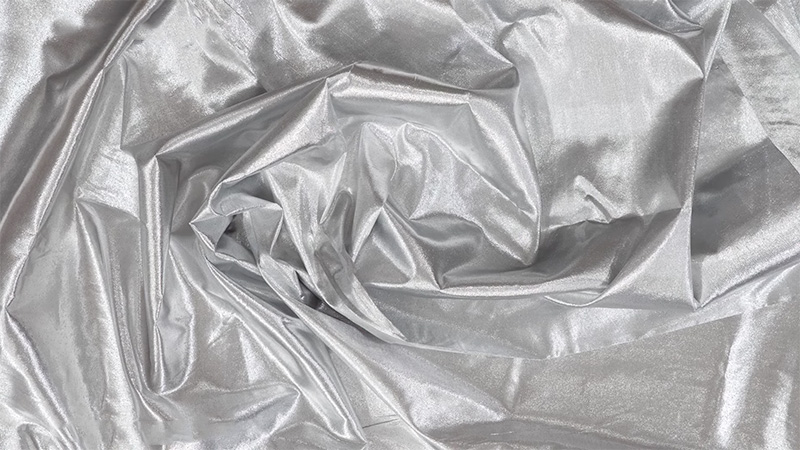
What is Tissue Fabric?
Tissue fabric is a delicate and lightweight material widely used in the fashion industry. It is primarily crafted from silk or synthetic fibers, ensuring a soft and luxurious texture.
What sets tissue fabric apart is its distinct transparent and shimmery appearance, achieved by incorporating golden or silver threads during the weaving process.
This interplay of threads creates a subtle metallic effect, adding a touch of elegance to the fabric. .
Tissue fabric finds immense popularity in designing women’s clothing, including sarees, dresses, and veils. Its sheer quality and ethereal aesthetics make it a favored choice for creating graceful and enchanting garments.
History of Tissue Fabric
The history of tissue fabric is somewhat elusive, with no definitive origin story for this exquisite material. However, certain variations of tissue fabric have their roots in specific regions.
The Kota tissue fabric, for instance, is indigenous to the Indian state of Rajasthan. .
Renowned for its lightweight and transparent nature, Kota tissue fabric has been cherished for centuries. Similarly, Uppada tissue fabric originates from Andhra Pradesh in India, known for its intricate weaving techniques and delicate texture.
While the precise origin of tissue fabric as a whole remains uncertain, its evolution can be traced back to the rich traditions and skilled craftsmanship of various cultures, where it has flourished as a symbol of beauty and sophistication in the world of textiles.
Characteristics of Tissue Fabric
Texture
Tissue fabric is known for its slightly rough and crisp texture. This feature adds a subtle tactile quality to the fabric, enhancing its overall charm.
Draping
The fabric offers a slightly structured drape to garments. It holds its shape well, providing a graceful and elegant silhouette when worn.
Shimmery Appearance
One of the most captivating features of tissue fabric is its shimmer. The use of golden or silver threads in the weaving process imparts a luminous quality, adding a touch of sophistication and glamour to the fabric.
Translucency
The tissue fabric is translucent, allowing light to pass through it. This characteristic creates an ethereal effect, making it ideal for creating delicate and romantic clothing pieces.
Lightweight
Tissue fabric is exceptionally lightweight, making it comfortable to wear and move in. Its airy nature adds to its desirability, particularly in warm climates or for garments that require a fluid and flowing look.
Types of Tissue Fabric
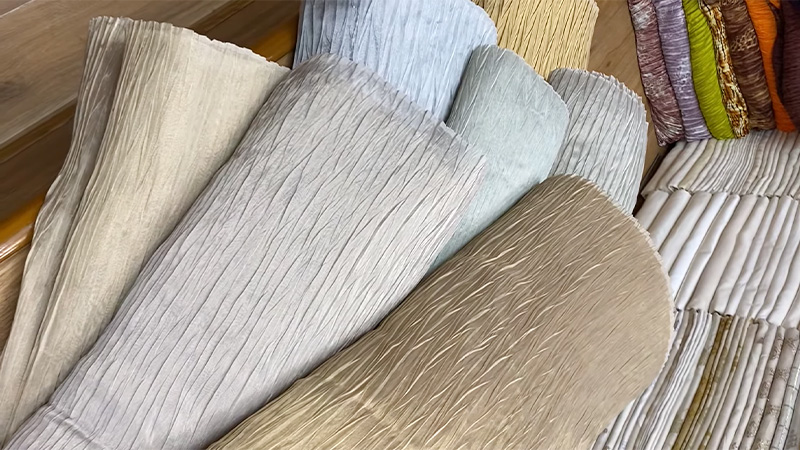
Organza
Organza is a sheer and lightweight fabric, often made from silk or synthetic fibers. It has a crisp texture, similar to tissue fabric, and is commonly used for creating formal garments and decorative elements.
Chiffon
Chiffon is a lightweight and sheer fabric known for its soft and flowing drape. It is commonly made from silk, polyester, or nylon and is often used in the creation of elegant evening gowns, scarves, and blouses.
Crêpe
Crêpe fabric has a slightly textured surface and a unique crinkled appearance. It can be made from various fibers, such as silk, polyester, or rayon, and is widely used for creating flowing dresses, blouses, and skirts.
Damask
Damask is a luxurious fabric characterized by its intricate woven patterns. It can be made from silk, cotton, or synthetic fibers and is commonly used for upholstery, curtains, and decorative textiles.
Silk
Silk is a natural fabric renowned for its smooth texture, lustrous appearance, and lightweight feel. It is often associated with elegance and is widely used in high-end fashion for dresses, scarves, and luxurious lingerie.
Gauze
Gauze fabric is sheer, lightweight, and often made from cotton or synthetic fibers. It has an open weave structure, similar to tissue fabric, and is commonly used for medical dressings, baby clothing, and lightweight garments.
Cotton
Cotton is a versatile and breathable fabric widely used in various applications. While it may not have the same sheerness as tissue fabric, cotton offers lightweight comfort and is commonly used in the production of dresses, blouses, and casual wear.
What is Tissue Fabric Made of?
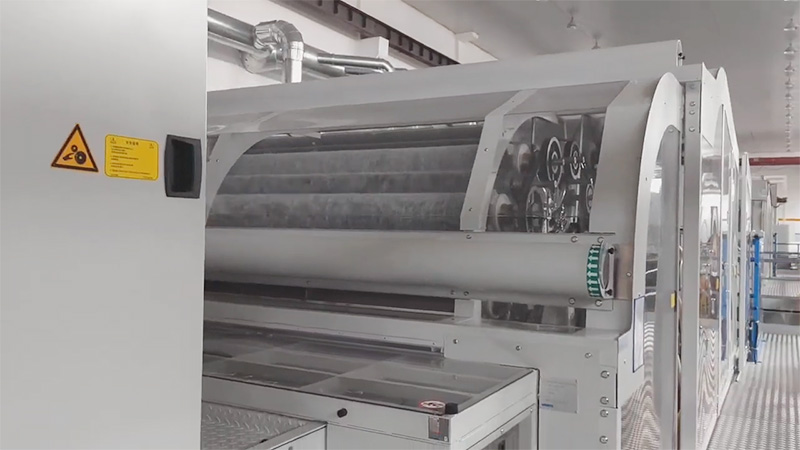
Base Fiber
The first component of tissue fabric is the base fiber, which can either be silk or man-made fibers. Silk is a natural protein fiber produced by silkworms and is known for its lustrous and smooth texture.
Man-made fibers, such as polyester or nylon, are synthetic materials engineered to mimic the properties of natural fibers.
Golden or Silver Threads
Tissue fabric is distinctively adorned with golden or silver threads woven into the fabric. These metallic threads contribute to the fabric’s shimmer and add an elegant touch.
They are often incorporated into the weft (horizontal) threads during the weaving process.
Weaving Technique
Tissue fabric is woven using a specific weaving technique that involves interlacing the warp (vertical) and weft threads to create a cohesive fabric structure.
Various weaving techniques, such as plain weave or jacquard weave, can be employed to achieve different patterns and textures within the tissue fabric.
Warp Types
Tissue fabric often utilizes three main types of warp threads: Katan Silk, Cotton, or Kora Silk. Katan Silk is a traditional silk fabric characterized by its fine texture and strength.
Cotton, a natural plant-based fiber, offers softness and breathability. Kora Silk, also known as Organza Silk, is a lightweight and sheer silk fabric.
What is Tissue Fabric Used for?
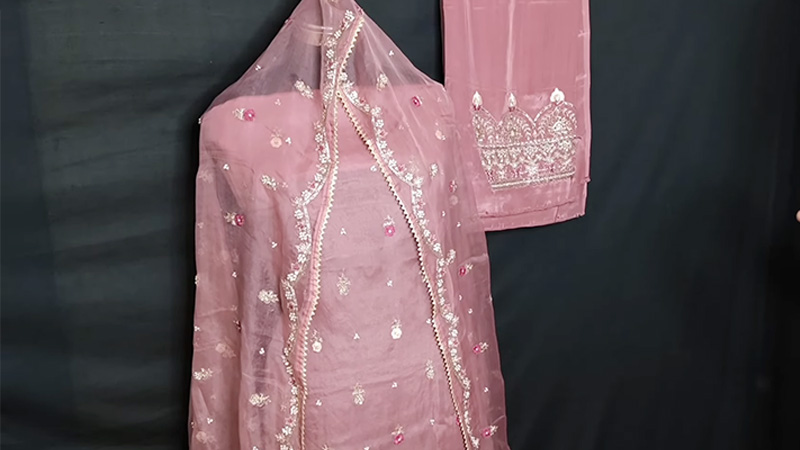
Sarees
Tissue fabric is often used to create exquisite sarees. The sheer and lightweight nature of the fabric, coupled with its shimmery appearance, adds grace and elegance to the drape of the saree.
Tissue sarees are popular for both casual and formal occasions, offering a delicate and sophisticated look.
Dresses
Tissue fabric is a favored choice for designing dresses, especially those with a feminine and romantic aesthetic. Whether it’s a flowy maxi dress, an evening gown, or a cocktail dress, tissue fabric lends a touch of glamour and a light, airy feel to the garment.
Veils
Tissue fabric’s translucent quality makes it ideal for crafting veils. Whether used for bridal veils, religious attire, or ceremonial purposes, tissue fabric adds a subtle allure and delicate layering to the veil, enhancing the overall look.
Turbans
Tissue fabric has also been traditionally used in creating turbans, particularly in certain cultural and ceremonial contexts. The lightweight and breathable nature of the fabric make it comfortable to wear while adding a touch of regal elegance.
Negligee
While tissue fabric itself is not typically used for negligee, negligee garments often incorporate wool and silk blends, which can include tissue fabric elements.
Negligee is a type of loose, flowing garment worn for loungewear or sleepwear, and tissue fabric can be used to add delicate embellishments or sheer panels to enhance its allure.
Is Tissue a Soft Fabric
Yes, tissue fabric is known for its soft and delicate nature. It is crafted to provide a luxurious and gentle touch, making it a favored choice for those seeking a fabric with a luxurious feel.
The weaving techniques employed in creating tissue fabric result in a fabric that is soft to the touch, allowing it to gracefully drape and flow when worn.
Tissue fabric’s softness is not only about its tactile qualities but also about the overall experience it offers. Its lightweight nature adds to its softness, making it comfortable to wear and move in.
When draped or used in garments, tissue fabric creates an elegant and gentle silhouette, enhancing the wearer’s grace and femininity.
Furthermore, tissue fabric is designed to have a subtle metallic sheen, adding to its allure. This shimmering quality, combined with its softness, makes tissue fabric a sought-after choice for creating luxurious and sophisticated garments that exude both beauty and comfort.
Is Tissue a Cotton?
Tissue fabric is not inherently made of cotton. While cotton can be used as one of the types of warp threads in tissue fabric, it is not the sole component of tissue fabric.
Tissue fabric is primarily crafted using silk or man-made fibers, such as polyester or nylon. .
The choice of warp threads can vary, and while cotton is one option, other types of silk, like Katan Silk or Kora Silk, are also commonly used.
Cotton is a versatile and widely used fabric in various applications, but it differs from tissue fabric in terms of texture, sheerness, and overall appearance.
Tissue fabric is known for its delicate and lightweight nature, as well as its translucent and shimmery characteristics, which are achieved through the use of golden or silver threads in the weaving process.
Therefore, while tissue fabric can incorporate cotton as one of its components, it is not solely composed of cotton.
Is Tissue a Raw Material
No, tissue itself is not a raw material. Tissue refers to a type of paper product that is produced from a raw material called paper pulp.
Paper pulp is the primary material used in the manufacturing of tissue paper. It is derived from various sources, including wood fibers, recycled paper, or a combination of both.
The process of producing tissue paper involves converting the paper pulp into a thin, lightweight, and soft paper product. The paper pulp is processed and refined, then formed into a thin sheet on a paper machine.
During this process, the sheet is dried using a steam-heated drying cylinder known as a Yankee dryer, which is equipped with a hot air hood.
So, while tissue paper is made from paper pulp, it is not considered a raw material itself. Rather, tissue is the end product that is produced from the raw material of paper pulp.
How Do You Wash Tissue Fabric Fabric?
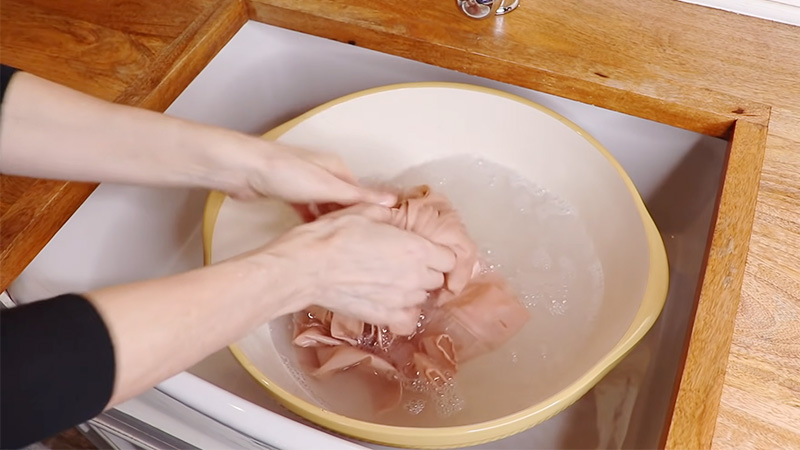
Prepare the Washing Area
Fill a sink or a basin with cold water. Avoid using hot water as it can damage the delicate fibers of the fabric. Add a mild detergent suitable for delicate fabrics.
Submerge the Fabric
Place the tissue fabric gently into the water, ensuring it is fully submerged. Swirl the fabric around gently to allow the detergent to penetrate the fibers.
Avoid any rubbing, wringing, or twisting, as it can cause damage.
Rinse the Fabric
Drain the soapy water and rinse the fabric with fresh cold water. Gently squeeze the fabric to remove excess water, but avoid wringing or twisting.
Absorb Excess Water
Lay a clean towel on a flat surface and place the wet tissue fabric on top. Roll the towel with the fabric inside to absorb more water. Avoid hanging or tumble drying the fabric, as it may stretch or lose its shape.
Air Dry
Unroll the towel and lay the tissue fabric flat on a dry surface, away from direct sunlight. Smooth out any wrinkles using your hands. Allow the fabric to air dry completely before handling or storing it.
How to Care for Tissue Clothes?
Separate From Other Garments
It’s important to separate tissue clothes from heavier or rougher fabrics to prevent any potential damage during the washing process. Wash them separately or with other delicate items to avoid friction and tangling.
Choose a Gentle Cycle
When machine washing tissue clothes, select a gentle or delicate cycle on your washing machine. This ensures a slower and milder agitation, reducing the risk of tearing or stretching the fabric.
Use a Mild Detergent
Opt for a mild detergent specifically designed for delicate fabrics. Harsh detergents can be too harsh on tissue fabric and may cause damage or fading.
Follow the detergent instructions and use the recommended amount for a gentle wash.
Cold Water Wash
Wash tissue clothes in cold water to prevent shrinking or damaging the fabric. Hot water can weaken the delicate fibers and affect the overall structure and appearance of the garment.
Avoid Excessive Agitation
Minimize the agitation and use a shorter washing cycle to protect tissue clothes. Gentle handling and less agitation help maintain the fabric’s integrity and prevent unnecessary wear and tear.
Air Dry or Low Heat
After washing, avoid tumble drying tissue clothes on high heat as it may lead to shrinkage or damage. Instead, opt for air drying by laying the garment flat on a clean, dry towel or a drying rack.
If using a dryer, choose the lowest heat setting or a delicate cycle.
Iron With Caution
Tissue clothes may require light ironing to remove wrinkles. Set your iron to the lowest heat setting suitable for the fabric and iron on the reverse side or use a pressing cloth to protect the delicate fibers.
Store Properly
When not in use, store tissue clothes in a cool, dry place away from direct sunlight to prevent discoloration. Hanging tissue garments may cause stretching, so consider folding them neatly to maintain their shape.
How to Sew Tissue Fabric
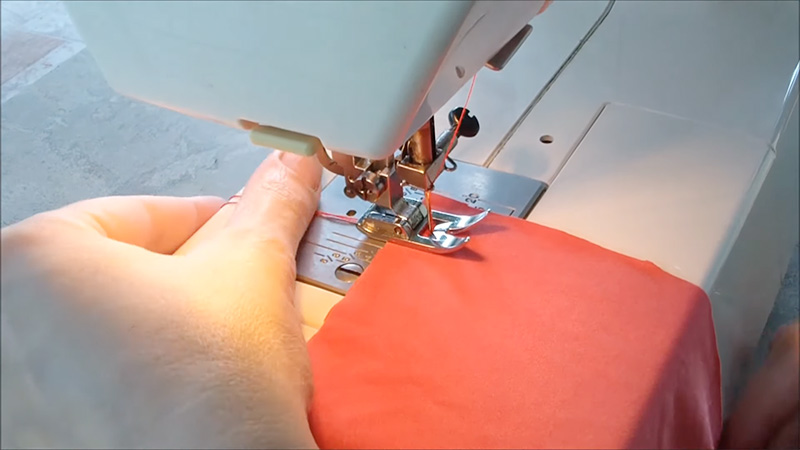
Needle Selection
Choose a sharp and fine needle, such as a micro text or sharp needle, to prevent snagging or tearing the delicate fabric. A smaller needle size, like 70/10 or 80/12, is ideal for tissue fabric.
Stitch Length and Type
Opt for a small stitch length, usually around 1.5 to 2 mm, to create secure seams. A narrow zigzag stitch can also be useful for preventing fraying while providing some flexibility to the seams.
Seam Finishing
Since tissue fabric has a tendency to fray, it’s essential to finish the raw edges of the seams. Options for seam finishing include using a serger/overlocker, pinking shears, or applying a narrow zigzag stitch along the edge of the fabric.
Pressing
Use a press cloth when pressing tissue fabric to protect it from heat damage. Set the iron to a low heat setting and apply gentle pressure. Avoid excessive steam as it may cause distortion or watermarks on the fabric.
Cutting Tools
For precise and smooth cutting, consider using a rotary cutter and a cutting mat. These tools help prevent the fabric from shifting and reduce the likelihood of frayed or uneven edges.
Pinning
Use pins sparingly and with care. Place them within the seam allowance to minimize visible holes or marks on the fabric. Alternatively, you can use clips or fabric weights to hold the tissue fabric layers together during sewing.
Test and Practice
Before starting on your final project, it’s advisable to test and practice your sewing techniques on a scrap piece of tissue fabric. This allows you to familiarize yourself with the fabric’s behavior and adjust your sewing settings if needed.
How Does Tissue Fabric Impact the Environment?
Here are some factors to consider:
Deforestation
One of the major concerns associated with tissue fabric is the high demand for virgin-fiber, which often leads to deforestation. The production of tissue paper requires a large quantity of wood pulp, and this demand results in the logging of trees, contributing to deforestation and habitat destruction.
Resource Consumption
Tissue fabric production consumes substantial amounts of resources such as water and energy. The manufacturing process involves pulping, bleaching, and drying the fibers, which require significant water usage and energy consumption.
Additionally, the transportation and distribution of tissue products also contribute to carbon emissions.
Chemical Usage
The production of tissue fabric involves the use of chemicals, such as chlorine-based bleaches, to achieve the desired whiteness and softness. These chemicals can have adverse effects on the environment, contaminating waterways and contributing to water pollution.
Waste Generation
Tissue fabric is primarily used as a disposable product, leading to significant waste generation. Tissues are often used once and then discarded, ending up in landfills.
The decomposition of tissue paper in landfills releases methane, a potent greenhouse gas that contributes to climate change.
To mitigate the environmental impact of tissue fabric, several measures can be taken:
Recycled Content
Opting for tissue products made from recycled paper helps reduce the demand for virgin-fiber and decreases the pressure on forests. Look for tissue products that are labeled as “recycled” or contain a high percentage of post-consumer recycled content.
Sustainable Sourcing
Choose tissue products certified by credible organizations such as the Forest Stewardship Council (FSC) or the Programme for the Endorsement of Forest Certification (PEFC). These certifications ensure that the fibers used in the tissue production come from responsibly managed and sustainable sources.
Minimize Usage
Encourage the responsible use of tissue products by minimizing unnecessary consumption. Using tissues sparingly and considering alternatives like reusable cloth wipes or handkerchiefs can help reduce waste.
Proper Disposal
Dispose of used tissue paper in appropriate waste bins or composting facilities, if available. Composting tissue paper can help divert it from landfills and promote nutrient recycling.
Awareness and Advocacy
Raise awareness about the environmental impact of tissue fabric and encourage others to make more sustainable choices. Support initiatives and policies that promote sustainable forestry practices, recycled content, and responsible tissue production.
What Are the Advantages and Disadvantages of Tissue Fabric
Advantages:
- Lightweight and breathable: Tissue fabric is known for its lightness and breathability, making it comfortable to wear in warm weather. It allows air circulation and prevents overheating, providing a cool and comfortable feel.
- Soft and smooth texture: The soft and smooth texture of tissue fabric gives it a luxurious and delicate appearance. It drapes beautifully and creates an elegant and graceful silhouette when used in garments or home decor items.
- Customizable and versatile: Tissue fabric can be easily dyed, printed, or embellished with various patterns and designs. This versatility allows for a wide range of creative possibilities, making it suitable for different preferences and occasions.
Disadvantages:
- Fragile and prone to damage: Tissue fabric is delicate and fragile, making it susceptible to tearing, snagging, or fraying. Extra care is needed when handling, sewing, or washing tissue fabric to avoid damage and maintain its integrity.
- Transparency: Due to its sheer nature, tissue fabric is often transparent, which may require additional measures such as a lining or an undergarment to ensure appropriate coverage and modesty.
- Prone to wrinkles and loss of shape: Tissue fabric has a tendency to wrinkle easily and may lose its shape after washing or wearing. It requires careful maintenance and may need ironing or steaming to restore its original appearance.
Comparison Table Between Tissue and Other Fabrics
| Property | Tissue Fabric | Chiffon | Organza | Voile |
|---|---|---|---|---|
| Fabric Composition | Silk or man-made fibers | Silk, polyester, or rayon | Silk, polyester, or nylon | Cotton, silk, or polyester |
| Transparency | Transparent | Transparent | Transparent | Transparent |
| Weight | Lightweight | Lightweight | Lightweight | Lightweight |
| Drape | Soft and fluid | Soft and fluid | Crisp and stiff | Soft and flowing |
| Sheerness | Sheer | Sheer | Sheer | Sheer |
| Breathability | Breathable | Breathable | Breathable | Breathable |
| Usage | Dresses, scarves, veils | Eveningwear, bridalwear | Formalwear, decorations | Dresses, curtains |
| Care | Delicate handling required | Delicate handling required | Delicate handling required | Delicate handling required |
| Wrinkle Resistance | Prone to wrinkling | Prone to wrinkling | Retains shape well | Prone to wrinkling |
| Durability | Moderate | Moderate | Moderate | Moderate |
| Price Range | Moderate to expensive | Moderate to expensive | Moderate to expensive | Affordable to moderate |
FAQs
Tissue fabric is delicate and requires gentle handling. It is generally recommended to hand wash tissue fabric to avoid damage. However, some tissue fabrics may have specific care instructions that allow for machine washing on a delicate cycle. Always refer to the care label or manufacturer’s instructions for the recommended washing method.
Yes, tissue fabric can be ironed, but it requires a low heat setting and a press cloth to protect the fabric from heat damage. Avoid using high heat or direct contact with the iron on tissue fabric to prevent scorching or melting.
Yes, chiffon, organza, and voile are fabrics that share some similarities with tissue fabric. They offer lightweight, sheer, and draping qualities. However, each fabric has its unique characteristics and may vary in terms of texture, transparency, and stiffness. It’s best to compare samples of different fabrics to find the one that best suits your specific needs.
Tissue fabric is not suitable for heavy-duty applications or upholstery. Its delicate nature and lightweight construction make it more suitable for garments, scarves, veils, and lightweight decorative purposes.
Tissue fabric tends to fray easily due to its thin and delicate nature. To prevent fraying, you can use techniques such as serging or zigzag stitching along the fabric edges, applying fabric glue or fray stopper, or using French seams. Experiment with different methods to find the one that works best for your specific fabric.
Tissue fabric can be used as a lining for certain garments, especially when a lightweight and sheer effect is desired. However, due to its transparency, you may need to consider the opacity and color of the outer fabric when using tissue fabric as a lining material.
To Recap
Tissue fabric is a delicate and lightweight material made of silk or man-made fibers. It is characterized by its transparent and shimmery appearance, often achieved through the use of golden or silver threads in the weaving process.
Tissue fabric finds its application in a variety of garments, including sarees, dresses, scarves, and veils, among others. While tissue fabric offers advantages such as breathability, softness, and versatility in design, it also has its challenges.
Its fragile nature, the tendency to fray or wrinkle easily, and the need for gentle care and maintenance should be considered. Additionally, the environmental impact of tissue fabric, especially when made from virgin-fiber sources, should be acknowledged.
By understanding the characteristics and proper handling techniques, one can fully appreciate the beauty and elegance that tissue fabric brings to various fashion and decorative creations.
Leave a Reply